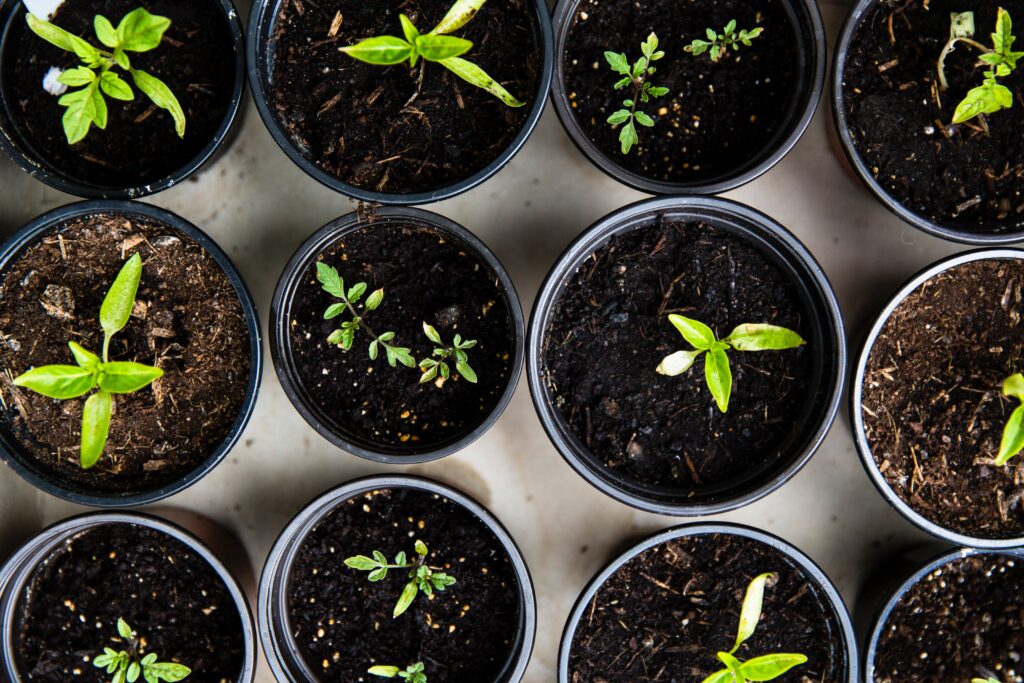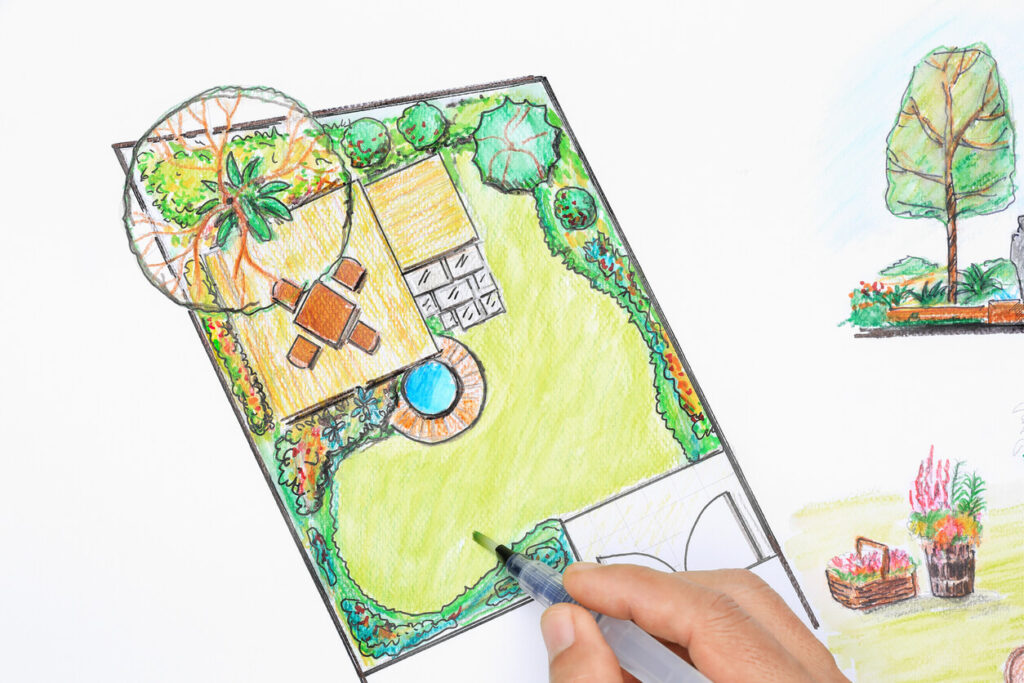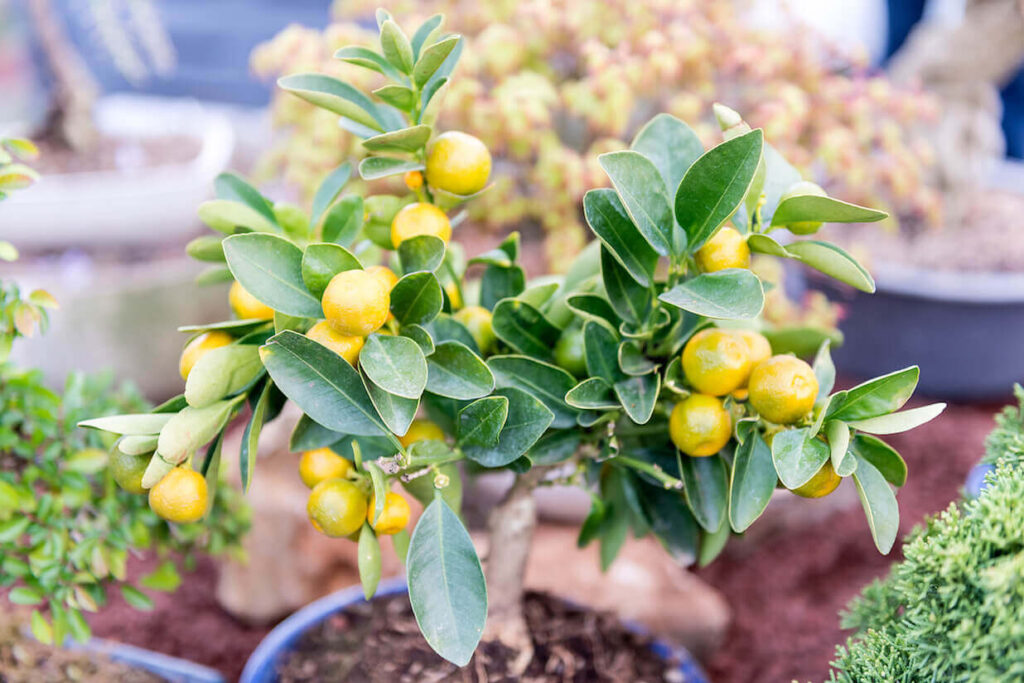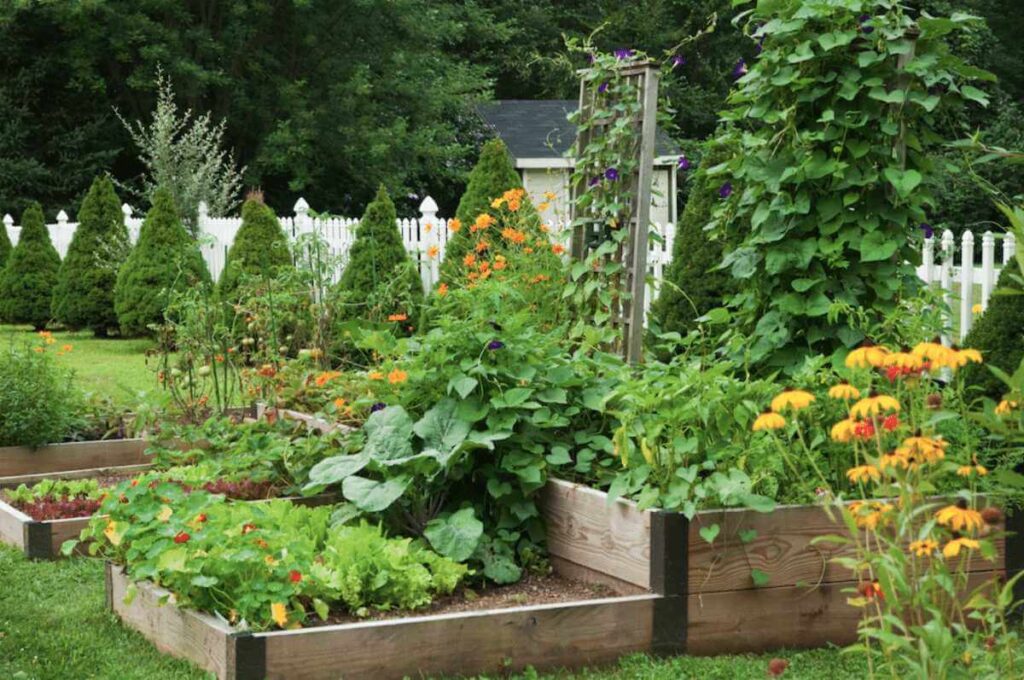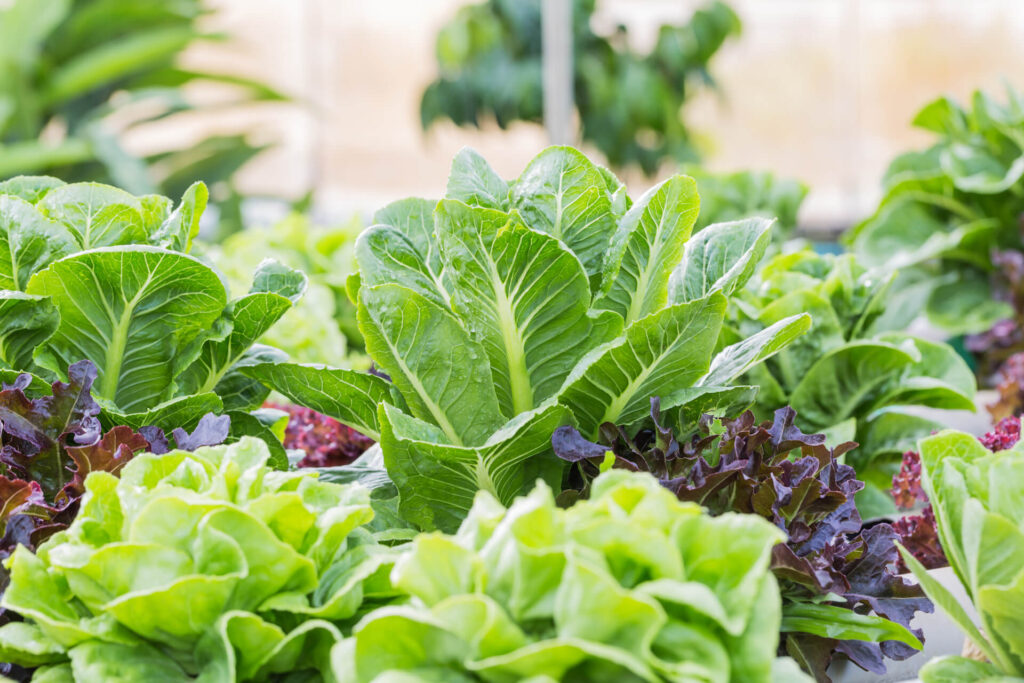The quiet months of fall and winter are so lovely – not only because of the cozy fires, delicious soups and stews, and holidays – but also because of the pause in our daily gardening activities. Yes, you read that correctly. We love gardening, but also appreciate slower times because it gives us the opportunity to plan for next year. Sometimes, new ideas and features for your garden require some time to plan and think through. It’s hard to do when you are in the thick of garden season. Let’s do some garden planning and brainstorming together!
Raised Bed & Container Garden Planning
Ten Easy Steps to Plan Your Spring Garden Designs
1.Take Stock.
It’s a fact we’ve repeated before, and it will be repeated again and again. It’s so important to spend the time to reflect on your past experiences, find out what worked and what didn’t, and then set goals for what you want. You can’t make beautiful and healthy gardens happen by accident. Make a list of the things that you don’t like about this year and think about how you can improve them. Then create an action plan.
2. Add Dimension and Variety.
If you start with an in-ground garden, it is possible that you will need to amend your soil. You might have had to fight digging critters, or had limited options for what you can grow in your soil. Get those garden beds raised! Consider incorporating raised garden beds in your garden. This will allow you to control the soil composition and improve drainage.
A great addition to any garden is shrubs and trees. They provide a beautiful backdrop for your stunning flower displays and offer a resting place for the eye. You should look for evergreen shrubs or trees that are suitable for your garden. Ornamental grasses add a contrast of texture and form, while adding in flowers with new color schemes and can introduce a new mood to your garden.
3. More Space.
Are you looking for more space? Take a look at your fence and other areas that are not being used. Hanging pots and felt bags are options. You also have the option to repurpose rain gutters for your plants. Put up an arch if you have plants that were too sun-saturated last year. Vertical gardening can unlock so much unused space for more gardening, whether you’ve got an apartment patio or a big suburban backyard! Check out our easy trellis tutorial to use in your raised bed, or you can buy pre-made trellises, arbors, and more at your local garden center.
4. Get Efficient.
After a few seasons, you will start to understand where you want to invest your time and where it is best to do so. You can save time in the offseason by adding time-saving features. With drip systems that are timer-operated, raising the ground surface to allow water to trickle down, and rain barrels, you can improve water usage and distribution in your garden. What about composting? This is the perfect time to start if you don’t already compost. You can also use these quiet months to assess your garden tools and make outside storage more convenient with a small or large shed, or even just a quick re-organization wherever you store them.
5. Get the Pollinators to Thrive.
When there is plenty of sunlight, gardens grow stronger and produce higher yields. They will also attract more pollinators! You can bring in plants and flowers that attract and maintain pollinators. Make a plan for how to enhance your garden to attract more of those beneficial bugs! We have a great blog to get you started here.
6. Extend Your Season.
Planning your garden for next season is great, but what about planning it to last longer? You can now research ways to extend the season of your garden by planting different plants at different times, rotating your garden more or adding cold weather cover crops to your garden beds. You should also consider adding cold frames, lean to’s, and other small structures to protect your plants from unexpected and expected weather changes.
7. Plan Your Off Season.
Gardening doesn’t end when there aren’t any more plants to take care of. Plan out how you can make the most of next offseason. It’s a great time of year to amend and enrich your soil. What does you soil need now that it doesn’t have? You can also work in the off-season to give your soil the nutrients it needs to allow microbes to thrive. You can also incorporate other types of plants, such as ornamental and flowering trees, into your garden. They will not only bloom in spring, but all year. You’ll have something to look forward to in the off-season, while you’re planning your big return!
8. Be Creative.
It’s not difficult to do, even you don’t think of yourself as a creative person! We use graph paper in 1/4″ squares, tracing papers, a soft pencil and an eraser. That’s it. You can now go to work designing new garden beds, extensions, or garden features. Scales can be as small as 1/4″ = 1′. Make sure you take notes about existing trees, structures, sun rise and set times, and any other pertinent information to help you plan. You now know how big your bed will be and where the plants will go.
9. Make a Pinterest Board.
We look for plants, features, colors, materials, and layout ideas that we like and save to a Pinterest board. It’s a great way to get ideas, even though the finished product may look very different from what you had planned. Make sure to give your board a new name each year, such as “New Garden 2024” instead of “Gardening”. You won’t be able to remember the exact location you pinned that rose image or rock garden, if it is all put on generic boards.
10. Get Some Paint.
Check out landscaper’s marking spray paint. It’s is an inverted spray can that you can find in the home improvement section. It allows you to spray the lines of new beds or features. This is an excellent option for those who are visual and need to see things in real-time and space. Sometimes what looks great on paper ends up looking way too small or too big in reality. So go out and get some spray paint! Next, take a step back and adjust as necessary. Once you are satisfied with the layout, measure it and make notes to ensure you don’t forget.
